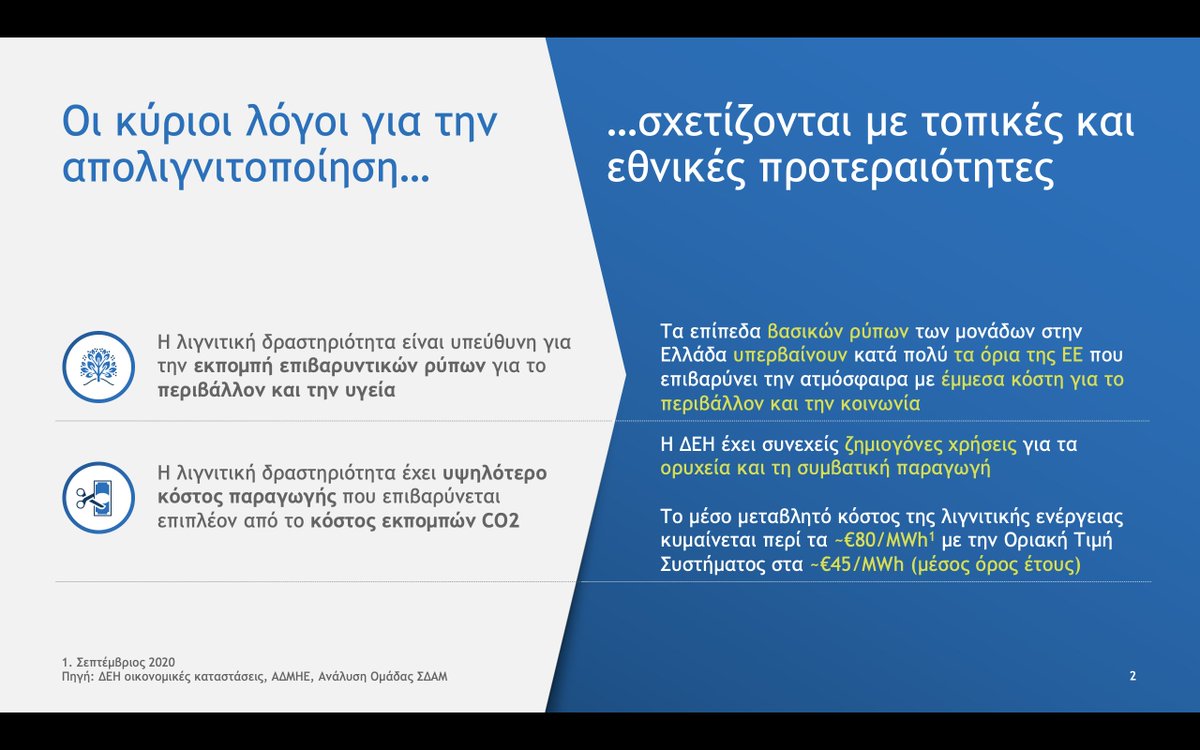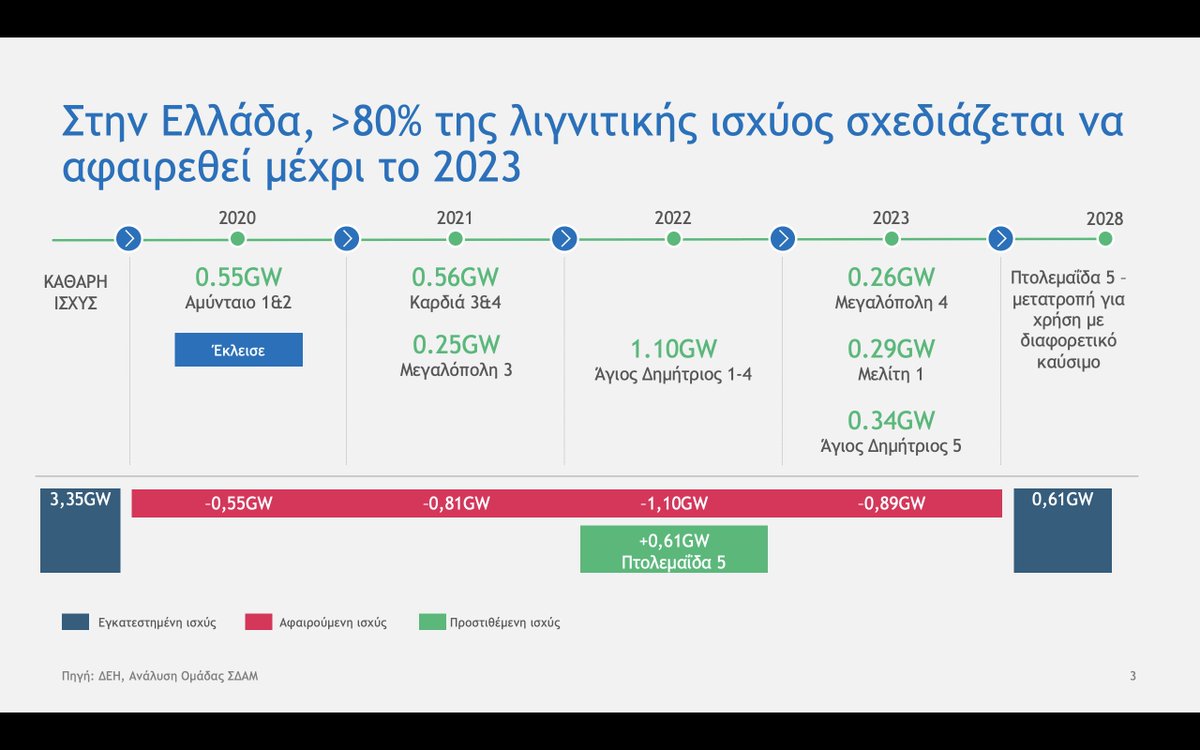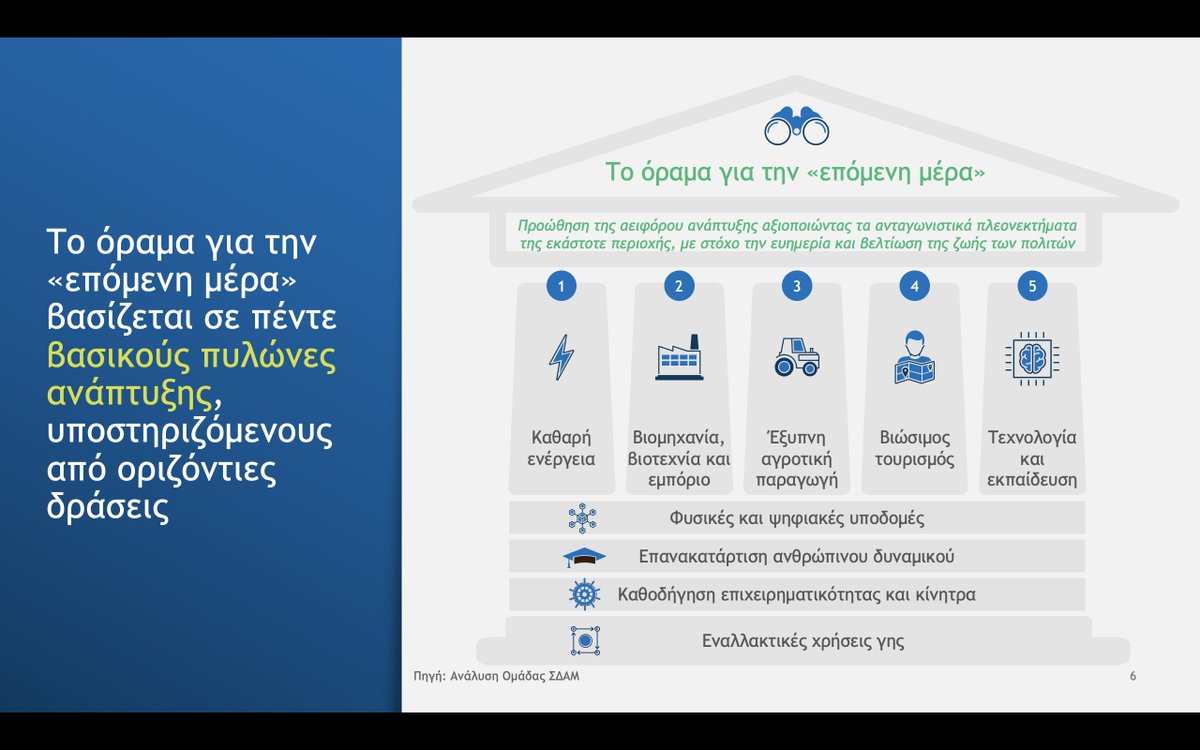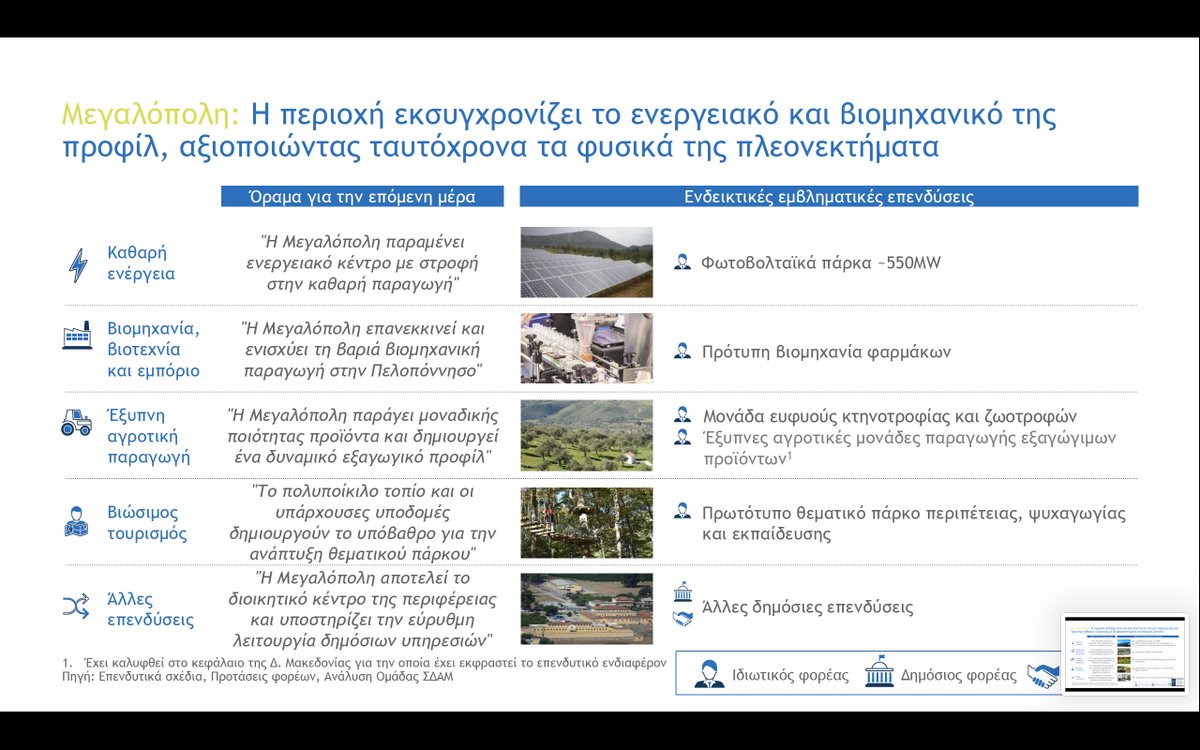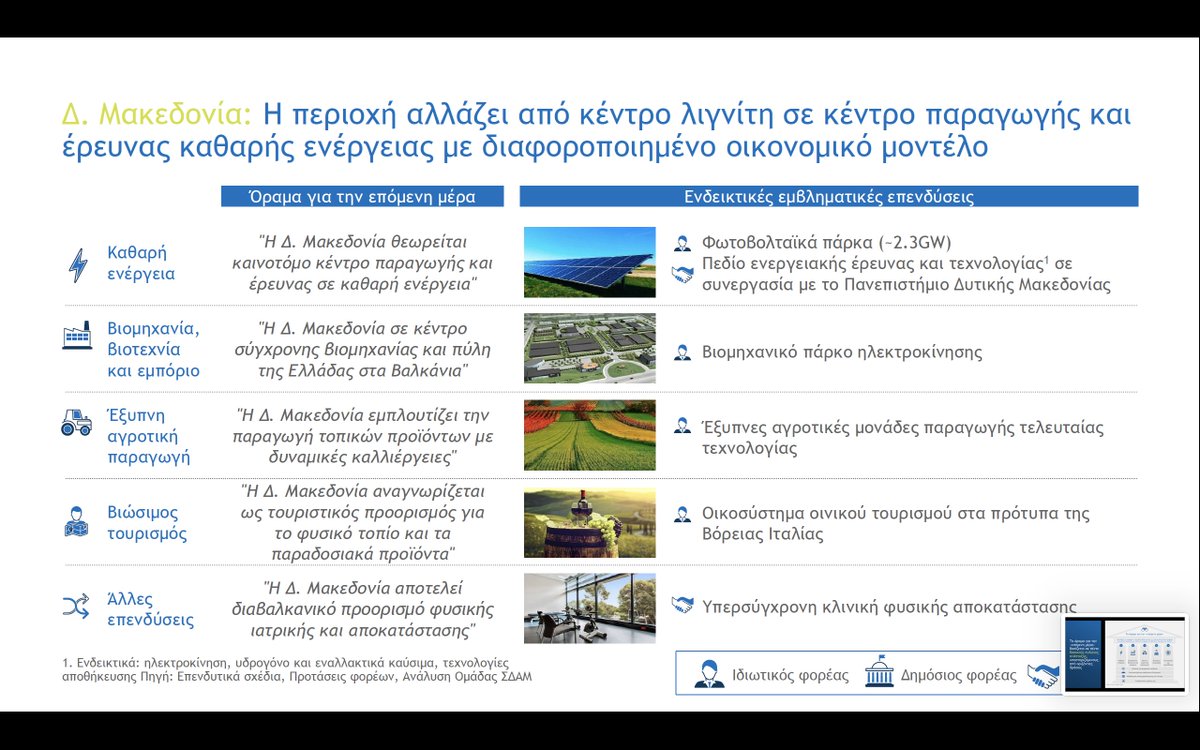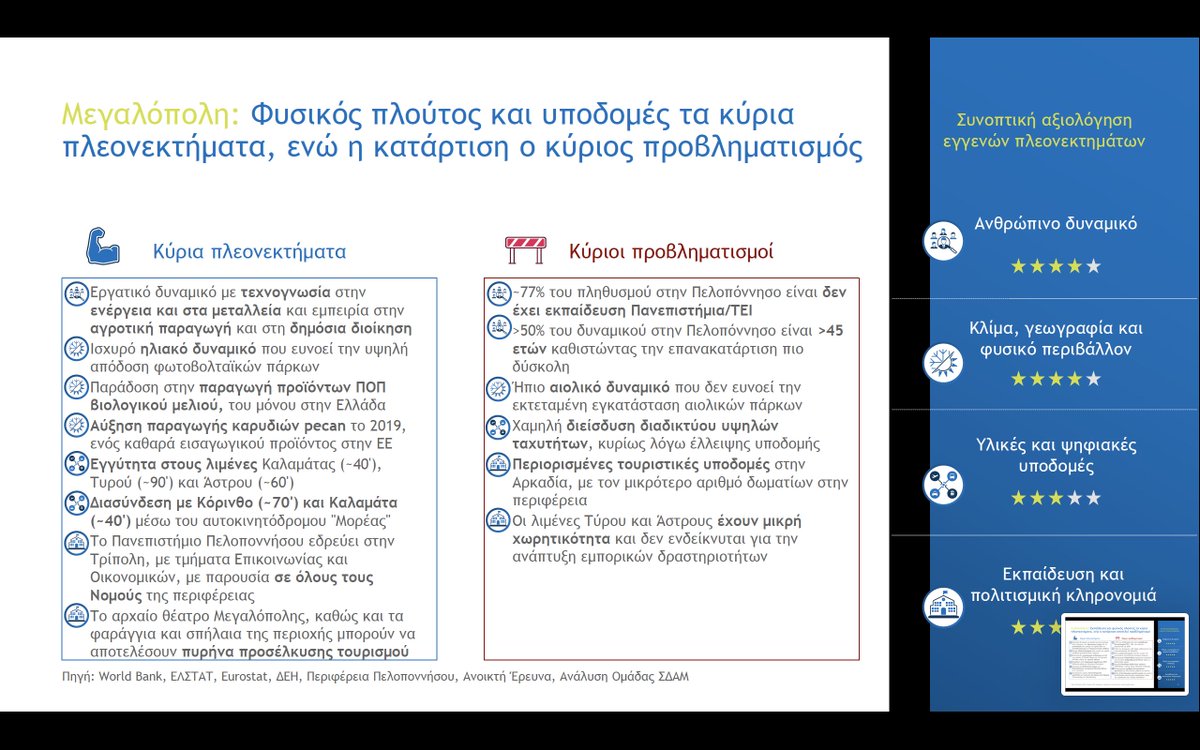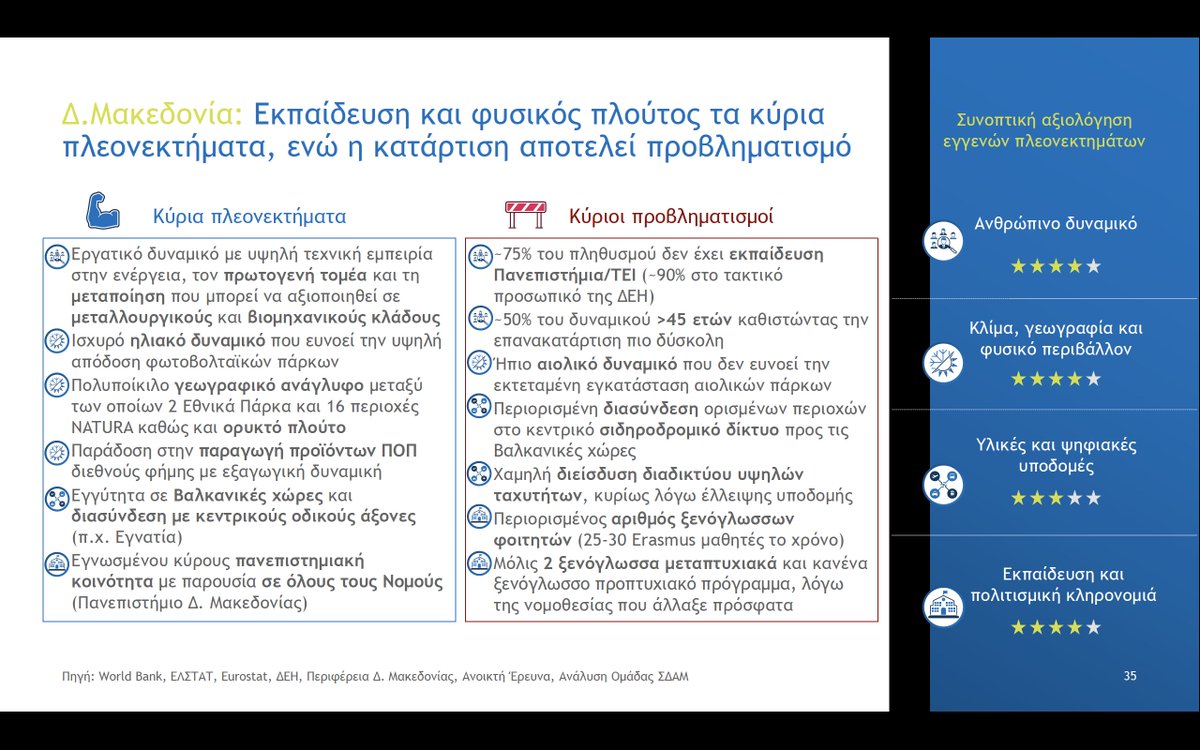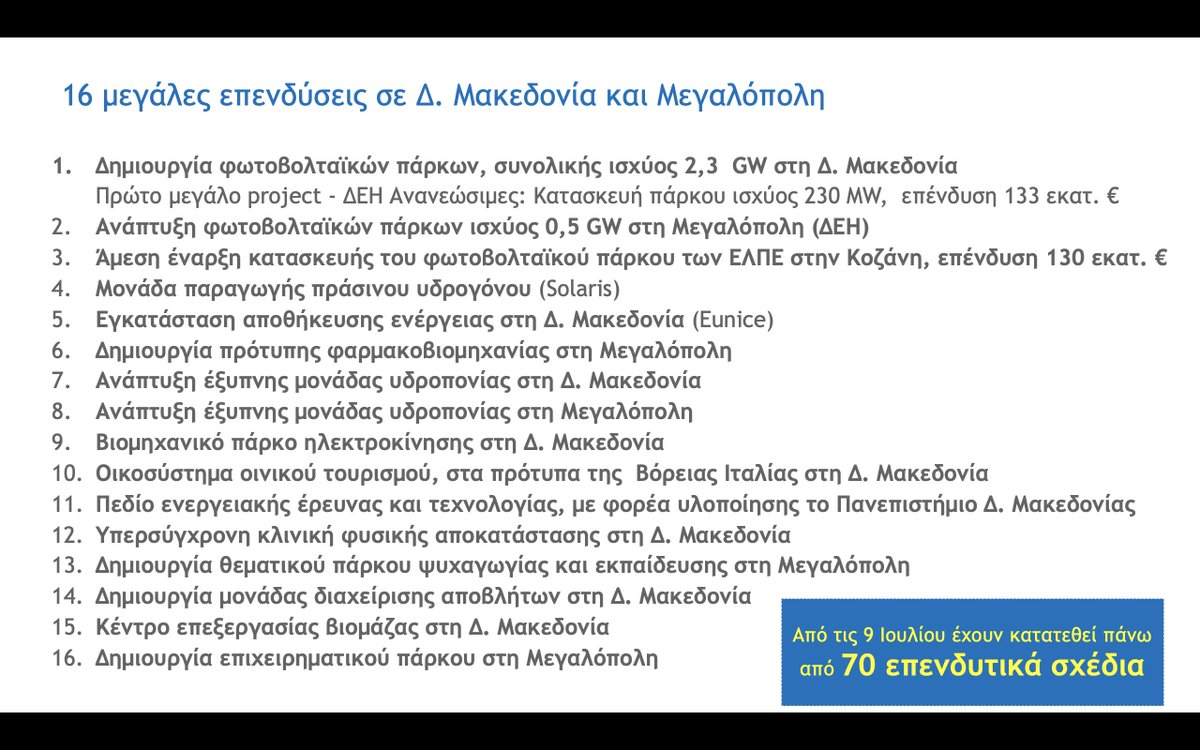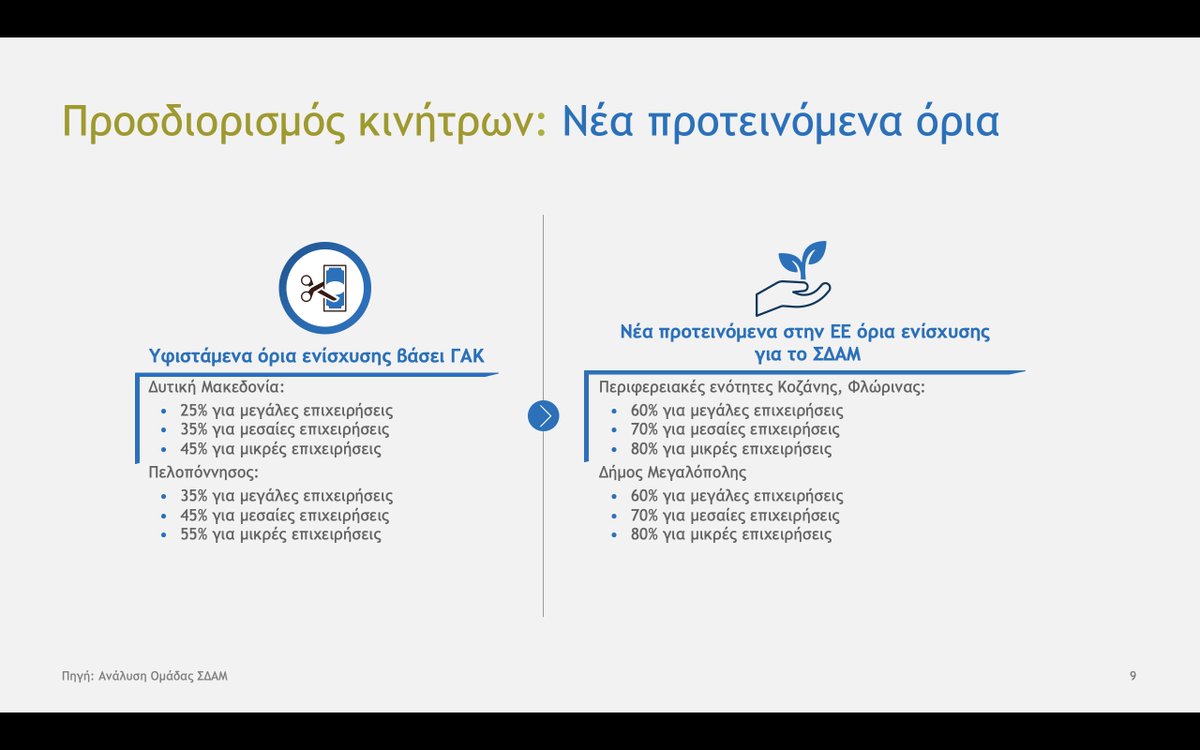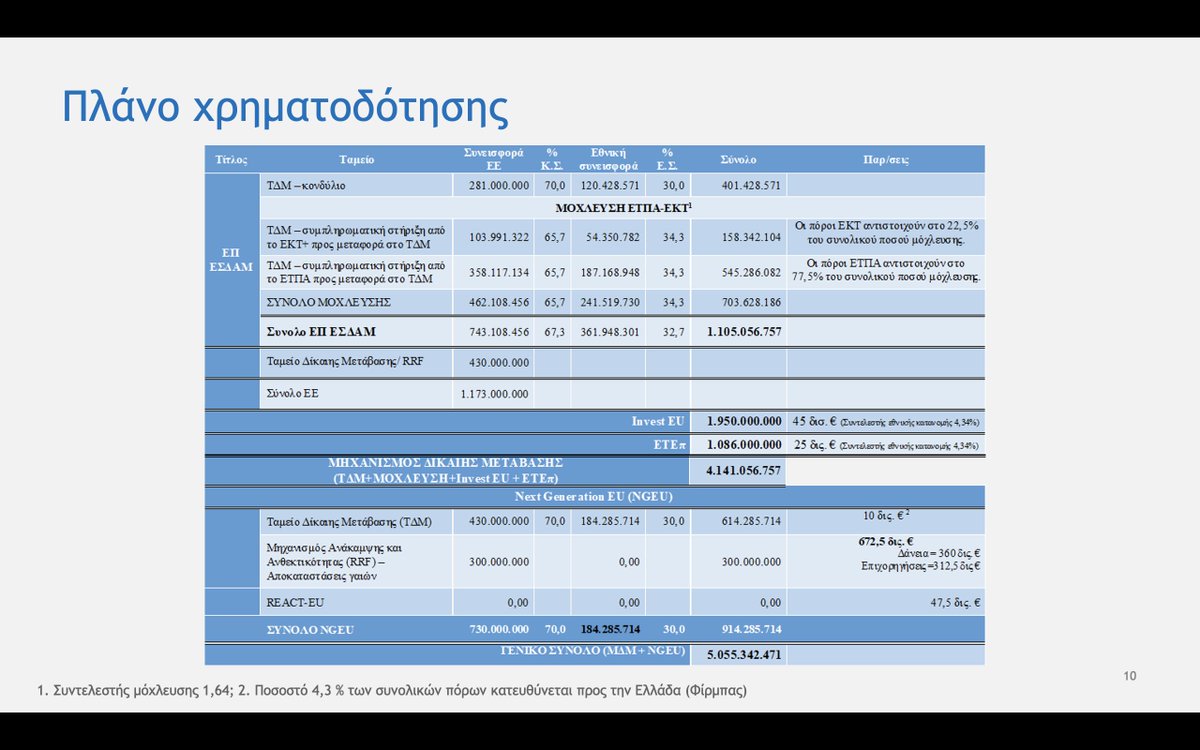Anyone interested in what a #JustTransition could look like should pay attention to Greece. The plan for phasing out coal in W. Macedonia and in Megalopolis is ambitious and, in many ways, state of the art.
Thread (plus slides in Greek).
@K_Hatzidakis @ASdoukou @kmoussouroulis
Thread (plus slides in Greek).
@K_Hatzidakis @ASdoukou @kmoussouroulis
The starting point, as in other places, is not just climate but economics. The variable cost for lignite is ~€80/MWh while the system marginal price is ~€45/MWh (annual average). It just doesn’t make economic sense to run coal plants any more.
The country needs to phase out ~3.3 GW (installed capacity, in the interconnected system, is ~19 GW), and to convert one coal plant under construction (Ptolemaida V)—possibly to natural gas.
Phaseout affects two regions; plan is to focus on (a) clean energy, (b) industry, (c) agriculture, (d) tourism and (e) tech and education. This is grounded on four pillars: natural and digital infrastructure, retraining, targeted entrepreneurship + incentives, land redevelopment.
The workforce employed directly by the power company (PPC) will be offered either retirement or placement in other roles in the company. The master plan focuses on the workforce adjacent to PPC and the region more broadly.
Each region has its unique characteristics and solutions; the plan for both regions emphasizes renewable energy (mostly solar PV) and agriculture; there are also specific plans for other manufacturing, tourism, etc.
I particularly appreciated these slides showing the challenges each region faces—broadly an older and less educated workforce, low wind potential, under-developed digital infrastructure and linkages to the economy at large (mostly rail), etc.
The list of proposed investments is long and ambitious. It also raises questions, especially in areas where investment in still new in other parts of the world (e.g. green hydrogen, electric vehicles, etc.).
Creating an attractive environment for investment and supporting it with money will be key—the master plan shows that the incentive structure might need to be raised (the tune of 60, 70 or 80 percent).
The financing challenge is also enormous (€5 bn), much of it from European sources. (If I am reading the table right, around 90 percent of the state contribution depends on EU funding—in one way or another.)
In short, this is a v. ambitious plan, but also contains many of the elements one expects to see in a just transition “master plan.” It shows serious planning and commitment; and I appreciate the diverse approach that doesn’t hinge on *one* industry or *one* big investment. (fin)
For more info, and a link to the slides: https://energypress.gr/news/hatzidakis-oi-ependyseis-toy-master-plan-apolignitopoiisis-tha-dimioyrgisoyn-perissoteres

 Read on Twitter
Read on Twitter